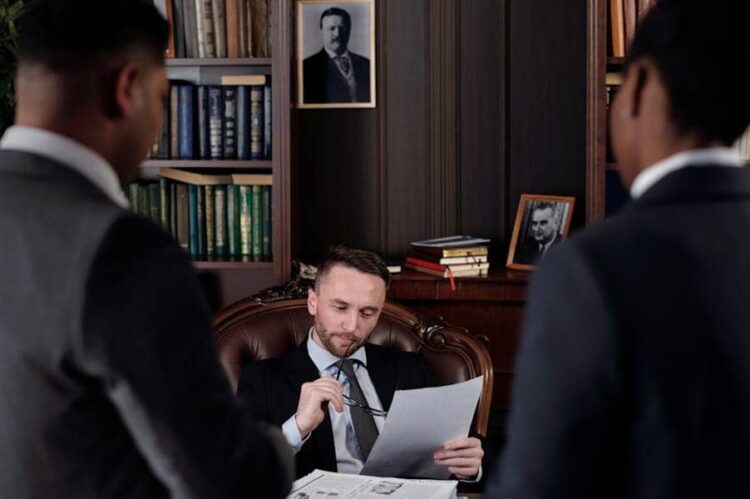The Hudson Valley, with its picturesque landscapes and bustling urban centers, is a hub for construction activity. However, this vibrant industry also comes with inherent risks. Construction sites can be dangerous places, and accidents, unfortunately, are not uncommon. These incidents can result in severe injuries, leaving workers grappling with medical bills, lost wages, and emotional distress. A Hudson Valley law firm specializing in construction accidents can be an invaluable resource for injured workers, providing guidance and legal expertise to navigate the complex claims process. If you’ve been injured in a construction accident in New York, understanding your legal rights and options is crucial for securing the compensation you deserve.
Understanding New York’s Construction Accident Laws
New York has some of the strongest laws in the nation designed to protect construction workers. Chief among these is the Scaffold Law (Labor Law 240), which holds property owners and contractors strictly liable for injuries caused by gravity-related hazards, such as falls from heights or being struck by falling objects. This means that even if the worker was partially at fault, they can still recover damages.
In addition to the Scaffold Law, New York Labor Laws 241(6) and 200 offer further protection. Labor Law 241(6) requires specific safety measures on construction sites, while Labor Law 200 imposes a general duty on owners and contractors to provide a safe working environment. Navigating these complex regulations requires the expertise of a Hudson Valley NY construction law firm that specializes in this area of law.
Common Causes of Construction Accidents in the Hudson Valley
Construction accidents in the Hudson Valley can arise from various hazards, including:
- Falls from Heights: These are among the most common and severe construction accidents, often occurring due to inadequate fall protection measures.
- Falling Objects: Tools, equipment, or debris falling from above can cause serious head injuries or other trauma.
- Electrocution: Contact with live wires or faulty electrical equipment can lead to burns, nerve damage, or even death.
- Machinery Accidents: Operating heavy machinery without proper training or safeguards can result in crush injuries, amputations, or other devastating injuries.
- Exposure to Hazardous Materials: Construction workers may be exposed to asbestos, lead, silica dust, or other harmful substances, leading to long-term health issues.
A Hudson Valley personal injury lawyer can investigate the circumstances of your accident, identify the responsible parties, and build a strong case on your behalf.
Steps to Take After a Construction Accident
If you’re injured in a construction accident, taking the following steps can protect your rights and maximize your chances of receiving fair compensation:
- Seek Medical Attention: Your health is the top priority. Seek immediate medical care, even if you feel your injuries are minor. Some injuries may not manifest symptoms right away.
- Report the Accident: Notify your supervisor or employer about the accident as soon as possible. Document the details of the incident, including the time, location, and any witnesses present.
- Gather Evidence: If possible, take photos of the accident scene and any hazardous conditions that contributed to your injury. Collect contact information from witnesses.
- Consult a Hudson Valley Personal Injury Lawyer: An experienced attorney can guide you through the legal process, protect your rights, and ensure you receive the compensation you deserve.
The Role of a Hudson Valley Personal Injury Lawyer
In the aftermath of a construction accident, it’s crucial to seek the guidance of a Hudson Valley personal injury lawyer with expertise in construction law. These legal professionals play a pivotal role in ensuring injured workers receive the compensation they deserve.
A Hudson Valley law firm specializing in construction accidents can offer invaluable assistance in various ways:
- Thorough Investigation: They will meticulously investigate the accident, examine the site, review safety protocols, and interview witnesses to determine the cause and identify liable parties.
- Legal Expertise: A Hudson Valley NY construction law firm possesses a deep understanding of New York’s complex labor laws and can effectively navigate the legal landscape on your behalf.
- Negotiation and Litigation: They will negotiate with insurance companies to secure a fair settlement. If a fair settlement cannot be reached, they are prepared to take your case to court and fight for your rights.
- Maximizing Compensation: An experienced attorney will assess all aspects of your damages, including medical expenses, lost wages, pain and suffering, and future medical needs, to ensure you receive the maximum compensation possible.
By entrusting your case to a qualified attorney, you can focus on your recovery while they handle the legal complexities, giving you the best chance of achieving a favorable outcome.
Conclusion
Construction accidents in the Hudson Valley can have devastating consequences, but knowing your legal rights and taking prompt action can significantly impact your recovery and future. If you’ve been injured on a construction site, don’t hesitate to seek legal counsel. A Hudson Valley personal injury lawyer can be your advocate, ensuring your rights are protected and fighting for the compensation you deserve. Remember, time is of the essence in these cases, so seek professional guidance as soon as possible to navigate the legal process and secure the resources you need to rebuild your life.









